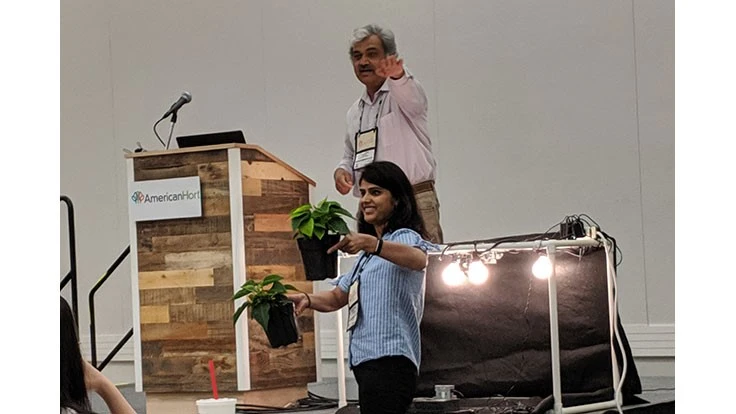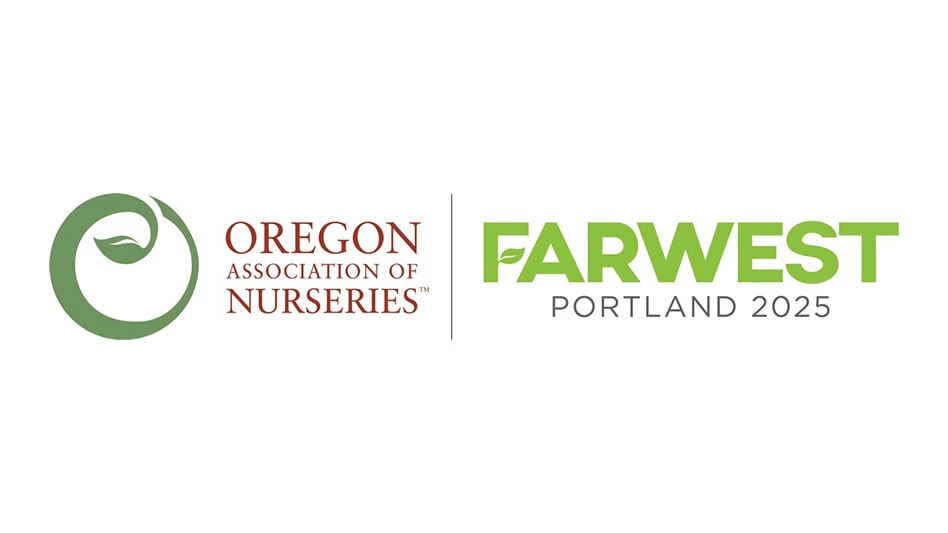
Matt McClellan
Dr. Krishna Nemali, a professor of horticulture and landscape architecture at Purdue University, spoke to attendees at Cultivate’19 in Columbus, Ohio about the next generation of sensor technology and how it can help growers.
One of Nemali’s main goals with his program is to develop new and affordable technologies that can improve sustainability and make them available to growers. In this case, the improved sustainability comes from reducing input waste and minimizing environmental impact while increasing profits.
Nemali said the key is accurate monitoring of inputs, which leads to optimal plant growth, which in turn leads to maximized profits.
Usually, growers use visual observations to monitor plant growth in greenhouses. If they detect slow plant growth, they adjust fertilizer supplied to plants or artificial light intensity or greenhouse temperature to increase growth.
However, cameras can detect plant growth deviations much better than the human eye.
“If you can pick up the difference, it’s at least 10%,” Nemali said. “Our eyes aren’t that good.”
It’s also challenging to manually observe plants when there are so many in a greenhouse. But the software his group has developed can efficiently measure a large number of plants.
Image-based technologies are rarely used in the greenhouse and nursery industries. Nemali said this is mainly due to the complexity and costs associated with the sensors. However, his lab is developing affordable image-based technologies for the greenhouse and nursery industry that use the smartphone for monitoring plant quality, tracking plant growth and plant nitrogen status. The new technologies he’s been working with use cheap cameras and smartphones to measure seedling quality in a flat or nitrogen status of plants in containers.
The intense cultivation practices make monitoring difficult. The rapid growth of many greenhouse crops forces growers to make quick decisions
“You have to be quick and you have to be accurate,” Nemali said. “The plants are not going to wait for us.”
This is why growers can benefit from smartphone-based sensor technology. Even a 2% change in irrigation volume can make a big difference, as Nemali demonstrated in a slide showing hydrangea growth.

Suboptimal plant growth affects profits, and excess application of water or fertilizer can affect plant quality or create environmental issues, due to runoff.
The industry sees the value. The Horticultural Research Institute has funded Nemali’s research into using smartphones for seedling quality and plant measurement.
The set-up uses a Raspberry Pi, a small, inexpensive computer that retails around $35, a $25 camera and a $10-15 case to create the “Pi-Cam.” Users can control Pi-Cam with their smartphone. The Pi-Cam sends images to a cloud storage solution, like Dropbox. The smartphone remotely connects to a local computer to run software. Then, that computer processes the images on the cloud. Finally, the data from the computer is sent to the smartphone.

The Pi-Cam set-up
With a $100 wifi range extender, growers can cover a 600 square foot area of the greenhouse.
The system can be programmed to take photos at any requested interval. Nemali’s group is making the software available to the public in an open beta. They hope to eventually roll out an app.
Nemali is currently looking for 15-20 facilities in the U.S. with interest to test the technology.
For more: https://www.purdue.edu/hla/sites/cea/
Latest from Greenhouse Management
- CEA Alliance celebrates bipartisan introduction of Supporting Innovation in Agriculture Act
- Dümmen Orange North America celebrating 25th anniversary in 2025
- Illinois Landscape Contractors Association changes name to Landscape Illinois
- 2025 Proven Winners Horticulture Scholarship applications now open
- ICL’s Gemini Granular herbicide now registered for use in California
- Eurazeo Planetary Boundaries Fund acquires Bioline AgroSciences
- Spring Meadow Nursery's Freedom Shelley finds joy in plants
- Leading Women of Horticulture: Dana Massey, Plantworks Nursery





